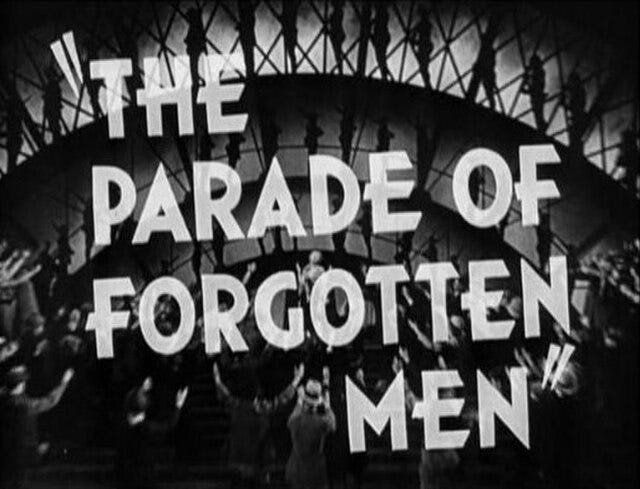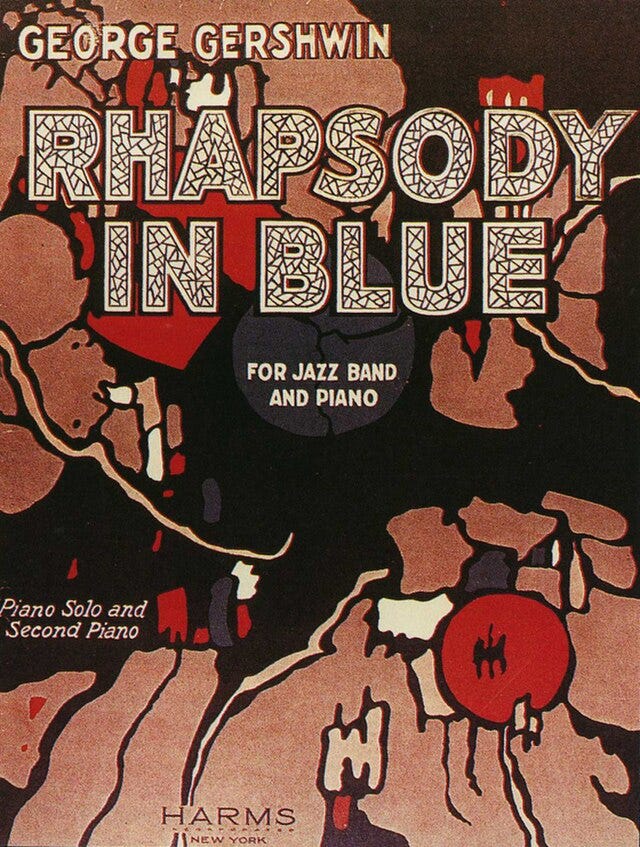
American Rhapsody

Every time I listen to Rhapsody in Blue by George Gershwin, I’m transported to early twentieth-century America: a place teeming with both optimism and dread, swaying between the poles of modern wonder and industrial dehumanization. The composition fuses solo piano with jazz band in perfect sync, like bees to honey. The keys lay the foundation; the band builds upon it. Together, they craft an opus of urban chaos, jazzy inflection, and musical storytelling. From the unmistakable clarinet glissando that opens the piece to the final swell of converging instrumentation, Rhapsody in Blue becomes the soundtrack of a nation transforming, from candlelit farmhouses to electrified city centers, from small-town innocence to mass-marketed madness.
Premiering on February 12, 1924, at Aeolian Hall in New York City, the concert billed itself as “An Experiment in Modern Music.” An apt title. Jazz was the music of modern America—restless, improvisational, and wildly alive. Rhapsody feels less like a composition than a sonic migration, a sweeping movement from old-world melancholy to new-world spectacle. But its legacy is complicated. Beneath its sweeping beauty lies a history of appropriation and stereotype, echoing America’s unresolved relationship with Black communities and Black musical innovation.
Contemporary jazz composer Ethan Iverson put it bluntly, calling Rhapsody “corny and caucasian” in a 2024 New York Times reflection. “We are blessed and stuck with this piece,” he wrote, “a flawed classic that exemplifies our nation’s unsettled relationship with the originators of African American music and technique.” His critique is echoed in a Grammy.com write-up on the piece’s centennial resonance, tracing the long debate over Gershwin’s work, one that stretches back to Duke Ellington himself, who once argued that Porgy and Bess failed to reflect a genuine “Negro musical idiom.”
And yet, not all within the Black artistic tradition condemned it. Musicians like Art Blakey and Billy Strayhorn found value and beauty in Rhapsody, proof that cultural critique is never monolithic. A century later, amid revanchist politics that make even that hopeful distance feel fragile, modern artists like Lara Downes have taken Rhapsody in Blue and reinterpreted it, reshaping its meaning by deepening its connection to the African American roots it once obscured. Downes also weaves in diasporic traditions from Central and South America, Asia, and the Middle East—communities long othered in the American project, but central to its true cultural language.
Gershwin himself was the product of Russian Jewish immigrants and grew up in the heart of America’s melting pot, Brooklyn, New York. Though the lens of his time was retrograde and even offensive to modern sensitivities, he was attuned to the palpable energy rising in the Harlem Renaissance. He had enough dynamism in his own experiences to seek it out.
Rhapsody in Blue, with all its tension, grit, and advance, was playing in my head as I dove into Busby Berkeley’s 42nd Street and Gold Diggers of 1933. The themes of urban landscapes amidst an anxious nation were translated onto the silver screen for unsuspecting audiences, and unfortunately, brought the ugly racial paradigm with it. But just as moving through Rhapsody in Blue showcases both the energetic hopes and lost dreams of America in the 1920s, these two films reveal the heart-pounding Depression-era escapism of Berkeley’s choreography and its visceral ability to strip away the American mask in an era of betrayal.
42nd Street
Keep reading with a 7-day free trial
Subscribe to Stew on This to keep reading this post and get 7 days of free access to the full post archives.




